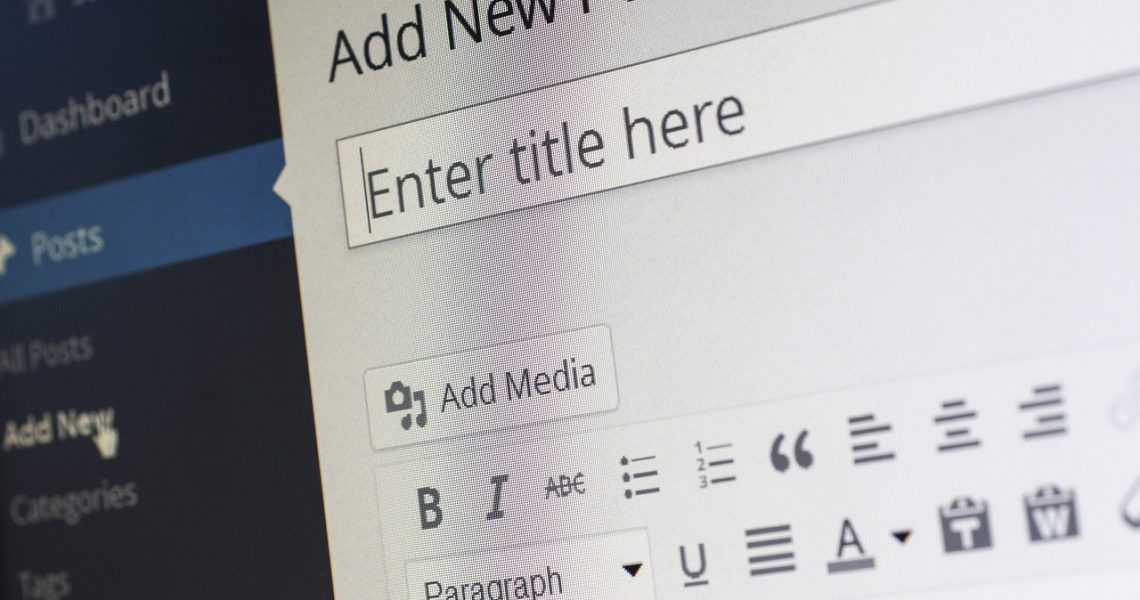How to Improve Your Blog Security in 2024
In the ever-evolving digital landscape of 2024, blog security has become more crucial than ever before. With the rising tide of cyber threats targeting bloggers, from small businesses to individual creators, the need for robust security measures has never been more apparent. As we navigate this increasingly complex online world, improving your blog’s security is not just a technical necessity—it’s a fundamental step in maintaining trust and integrity with your audience.
The digital threats we face today are more sophisticated and persistent than ever before. Hackers and cybercriminals are constantly developing new techniques to exploit vulnerabilities, making it essential for bloggers to stay one step ahead. By understanding the risks and implementing the right security measures, you can protect your blog, your data, and your readers from potential harm.
In this comprehensive guide, we’ll explore the most common security threats facing bloggers in 2024, essential security practices every blogger should implement, and advanced strategies to fortify your blog against even the most determined attackers. We’ll also delve into the role of AI in blog security and introduce you to cutting-edge tools that can help safeguard your online presence.
Let’s embark on this journey to create a safer, more secure blogging environment for you and your audience.
1. Common Blog Security Threats in 2024
As we progress through 2024, the landscape of cyber threats continues to evolve, presenting new challenges for bloggers. Understanding these threats is the first step in protecting your blog effectively. Here are some of the most prevalent security threats you need to be aware of:
Hacking Attempts
Cybercriminals are increasingly targeting blogs to steal personal or financial information. These attacks can range from brute force attempts to sophisticated social engineering tactics.
Malware Injections
Malicious software injected into your blog can compromise site functionality, steal data, and even turn your site into a host for distributing more malware.
Phishing Attacks
These deceptive attacks target both blog owners and their subscribers, often through seemingly legitimate emails or messages that trick users into revealing sensitive information.
Data Breaches
A successful breach can expose sensitive information about you and your readers, potentially leading to identity theft or financial fraud.
Compared to previous years, these threats have become more targeted and complex. Attackers are now using AI-powered tools to automate their efforts, making it easier for them to launch large-scale attacks on multiple blogs simultaneously.
To recognize these threats before they cause damage:
- Regularly monitor your blog’s traffic patterns for any unusual spikes or drops.
- Keep an eye out for unexpected changes to your blog’s appearance or functionality.
- Be wary of unsolicited emails or messages asking for login credentials or personal information.
- Use security plugins that can alert you to potential threats or suspicious activities.
By staying vigilant and educating yourself about these evolving threats, you can significantly reduce the risk of falling victim to a cyber attack.
2. Essential Security Practices for Bloggers
Implementing basic security measures is crucial for every blogger. These fundamental practices form the foundation of a secure blog:
Use Strong Passwords and Multi-Factor Authentication (MFA)
- Create unique, complex passwords for all your accounts.
- Implement MFA to add an extra layer of security beyond just a password.
- Consider using a password manager to generate and store strong passwords securely.
Regular Updates
- Keep your content management system (CMS) up to date with the latest version.
- Update all themes and plugins regularly to patch known vulnerabilities.
- Remove any unused themes or plugins to reduce potential attack vectors.
Secure Hosting
- Choose a reputable hosting provider that prioritizes security.
- Look for hosts that offer features like daily backups, malware scanning, and DDoS protection.
SSL Certificates
SSL (Secure Sockets Layer) certificates are essential for encrypting data transferred between your blog and its visitors. They not only protect sensitive information but also boost your blog’s credibility and search engine rankings.
To implement SSL:
- Purchase an SSL certificate from a trusted provider or use a free option like Let’s Encrypt.
- Install the certificate on your web server.
- Update your blog’s settings to use HTTPS instead of HTTP.
Automated Backups
Regular backups ensure that you can recover your data in case of an attack or technical failure. To set up automated backups:
- Choose a backup plugin or service compatible with your CMS.
- Configure the backup frequency (daily or weekly is recommended).
- Store backups in multiple locations, including off-site storage.
- Regularly test your backups to ensure they can be restored successfully.
By implementing these essential security practices, you’ll significantly enhance your blog’s resilience against common threats and create a solid foundation for more advanced security measures.
3. Advanced Blog Security Tips for 2024

As cyber threats become more sophisticated, it’s crucial to implement advanced security strategies to protect your blog from complex attacks. Here are some cutting-edge techniques to consider:
Web Application Firewalls (WAF)
A WAF acts as a shield between your blog and the internet, filtering out malicious traffic before it reaches your server. To implement a WAF:
- Choose a reputable WAF provider or plugin.
- Configure the WAF rules to match your blog’s specific needs.
- Regularly update and fine-tune the rules to address new threats.
DDoS Protection
Distributed Denial of Service (DDoS) attacks can overwhelm your blog with traffic, making it inaccessible to legitimate users. To mitigate this risk:
- Use a CDN (Content Delivery Network) with built-in DDoS protection.
- Implement rate limiting to restrict the number of requests from a single IP address.
- Configure your server to automatically block suspicious IP addresses.
Advanced Spam Filters
Spam comments and links can harm your blog’s reputation and potentially introduce malware. Implement advanced spam filtering by:
- Using AI-powered spam detection plugins.
- Setting up CAPTCHA for comment submissions.
- Implementing a comment approval system for first-time commenters.
AI-Powered Security Monitoring
Artificial Intelligence is revolutionizing blog security by providing real-time threat detection and response. AI-powered security tools can:
- Analyze traffic patterns to identify potential threats.
- Detect and block suspicious activities automatically.
- Generate detailed security reports to help you understand and address vulnerabilities.
Some popular AI-powered security tools for blogs include:
- Sucuri: Offers comprehensive security solutions with AI-enhanced threat detection.
- Wordfence: Provides real-time threat defense and malware scanning for WordPress sites.
- Cloudflare: Uses machine learning to identify and mitigate various types of attacks.
By implementing these advanced security measures, you’ll be better equipped to handle sophisticated cyber threats and protect your blog from emerging risks in 2024.
4. AI Tools and Their Role in Blog Security

Artificial Intelligence is not just a buzzword in 2024; it’s a game-changer for blog security. AI-powered tools are becoming increasingly sophisticated, offering bloggers unprecedented protection against cyber threats. Here’s how AI is revolutionizing blog security:
Automated Threat Detection
AI algorithms can analyze vast amounts of data in real-time, identifying patterns that might indicate a security threat. This allows for:
- Early detection of potential hacking attempts
- Identification of unusual traffic patterns that could signal a DDoS attack
- Recognition of new types of malware based on behavior analysis
Predictive Security
AI doesn’t just react to threats; it can predict them. By analyzing historical data and current trends, AI-powered tools can:
- Forecast potential vulnerabilities in your blog’s architecture
- Suggest preemptive measures to strengthen your security posture
- Adapt security protocols in real-time based on emerging threats
Intelligent Access Control
AI can enhance your blog’s access control mechanisms by:
- Detecting and blocking suspicious login attempts
- Implementing adaptive multi-factor authentication based on risk assessment
- Identifying and preventing credential stuffing attacks
Smart Content Filtering
AI algorithms excel at content analysis, helping to:
- Filter out spam comments with greater accuracy
- Detect and block malicious links in user-generated content
- Identify potentially harmful or inappropriate content before it’s published
Automated Security Reporting
AI-powered tools can generate comprehensive security reports, providing:
- Detailed analysis of security events and their potential impact
- Actionable insights for improving your blog’s security
- Trends and patterns in security threats specific to your blog
While AI tools are incredibly powerful for enhancing blog security, they’re not limited to just protection. These versatile tools can also assist in various aspects of content creation and blog management.
5. Blog Ideas Generator: A Tool for Securing and Growing Your Blog

In the realm of AI-powered tools for bloggers, the Blog Ideas Generator from Jadve stands out as a valuable asset. This innovative tool not only helps you brainstorm fresh content ideas but can also be instrumental in generating ideas for your blog that focus on security and best practices.
Here’s how the Blog Ideas Generator can help you create security-focused content:
- Topic Inspiration: By inputting keywords related to blog security, you can generate a list of potential article topics that educate your readers about staying safe online.
- Trend Analysis: The tool can analyze current trends in blog security, helping you create timely and relevant content that addresses the latest concerns in the blogging community.
- Audience Engagement: By suggesting topics that resonate with your readers’ security concerns, you can create content that not only informs but also engages your audience on a personal level.
- SEO Optimization: The generated ideas often include popular search terms, helping you create content that’s more likely to rank well in search engines for security-related queries.
- Content Series Suggestions: The tool might propose a series of related topics, allowing you to create comprehensive guides on various aspects of blog security.
By leveraging the Blog Ideas Generator, you can:
- Develop a content strategy that incorporates regular security-focused posts
- Educate your readers about the importance of online safety
- Position your blog as a trusted source of information on blog security
- Attract new readers who are searching for guidance on protecting their online presence
Remember, creating content about blog security not only helps your readers but also demonstrates your commitment to maintaining a safe and trustworthy online environment. This can significantly enhance your blog’s credibility and authority in your niche.
6. Recommended Security Plugins and Tools for 2024
Choosing the right security plugins and tools is crucial for maintaining a robust defense against cyber threats. Here’s a comparison of some popular blog security plugins and tools available in 2024:
| Plugin/Tool | Key Features | Pricing | Ease of Use |
|---|---|---|---|
| Wordfence | – Real-time threat defense
– Malware scanning – Two-factor authentication – Country blocking |
Free version available
Premium from $99/year |
4/5 – User-friendly interface with some advanced options |
| Sucuri | – Website firewall
– Malware removal – DDoS protection – SSL support |
From $199.99/year | 3/5 – Powerful but may require some technical knowledge |
| iThemes Security | – Two-factor authentication
– Malware scan scheduling – Password security enforcement – Away mode |
Free version available
Pro from $80/year |
5/5 – Very user-friendly with guided setup |
| Jetpack | – Brute force attack protection
– Downtime monitoring – Automated backups – Spam filtering |
Free version available
Premium from $9/month |
4/5 – Easy to use with WordPress integration |
| All In One WP Security & Firewall | – User account security
– Login lockdown – File system security – Blacklist functionality |
Free | 3/5 – Feature-rich but may be overwhelming for beginners |
When choosing a security plugin or tool, consider the following factors:
- Compatibility with your CMS
- Regular updates and support
- Impact on site performance
- User reviews and reputation
- Specific features that address your blog’s unique security needs
Remember, no single plugin can provide complete protection. It’s often best to use a combination of tools and regularly review your security setup to ensure comprehensive coverage.
7. Compliance with GDPR and Data Privacy Regulations
In 2024, compliance with data privacy regulations, particularly the General Data Protection Regulation (GDPR), remains a critical aspect of blog security. Failure to comply can result in severe penalties and damage to your blog’s reputation. Here’s a checklist to help ensure your blog is GDPR compliant:
| Compliance Task | Description | Completed |
|---|---|---|
| Privacy Policy | Create a clear, accessible privacy policy detailing how you collect, use, and protect user data |
☐ |
| Consent Mechanisms | Implement opt-in consent for data collection (e.g., newsletter signups, comments) |
☐ |
| Data Access | Provide a way for users to request access to their personal data |
☐ |
| Right to be Forgotten | Implement a process for users to request deletion of their data |
☐ |
| Data Portability | Allow users to export their data in a common format |
☐ |
| Secure Data Storage | Ensure all user data is encrypted and securely stored |
☐ |
| Third-party Services | Audit and document all third-party services that process user data |
☐ |
| Data Breach Protocol | Develop a plan for detecting, reporting, and responding to data breaches |
☐ |
| Cookie Compliance | Implement a cookie consent banner and allow users to manage preferences |
☐ |
| Staff Training | Educate team members on GDPR requirements and data handling procedures |
☐ |
| Regular Audits | Conduct periodic audits to ensure ongoing GDPR compliance |
☐ |
To maintain GDPR compliance:
- Regularly review and update your privacy policy
- Keep detailed records of user consent
- Implement data minimization practices
- Ensure that any plugins or tools you use are also GDPR compliant
- Stay informed about any changes or updates to data privacy regulations
Remember, GDPR compliance is an ongoing process, not a one-time task. Regularly reviewing and updating your practices is essential to maintain compliance and protect your users’ data.
8. Case Studies: Blogs That Successfully Improved Security in 2024
Learning from real-world examples can provide valuable insights into effective security practices. Here are two case studies of blogs that significantly enhanced their security in 2024:
Case Study 1: TechBlog24
TechBlog24, a popular technology news site, faced a series of DDoS attacks in early 2024. They took the following steps to improve their security:
- Implemented a cloud-based WAF and DDoS protection service
- Switched to a more secure hosting provider with built-in security features
- Conducted a thorough security audit and addressed all identified vulnerabilities
- Implemented two-factor authentication for all admin accounts
- Regularly trained staff on security best practices
Results:
- 99.9% reduction in successful attack attempts
- Improved site load times due to optimized security measures
- Increased user trust, leading to a 15% growth in subscriber base
Case Study 2: HealthyLifeBlog
HealthyLifeBlog, a personal wellness blog, experienced a data breach exposing subscriber information. They took the following actions:
- Engaged a cybersecurity firm to investigate and resolve the breach
- Upgraded their CMS and all plugins to the latest versions
- Implemented an AI-powered security monitoring tool
- Revamped their data collection and storage practices to ensure GDPR compliance
- Launched a transparent communication campaign to rebuild trust with their audience
Results:
- No further security incidents reported
- Successfully regained user trust, retaining 95% of subscribers post-breach
- Improved search engine rankings due to enhanced security measures
These case studies demonstrate that with the right approach and tools, blogs can significantly enhance their security posture and recover from security incidents.
Conclusion
As we navigate the complex digital landscape of 2024, the importance of blog security cannot be overstated. The threats we face are evolving rapidly, but so are the tools and strategies available to combat them. By implementing the measures outlined in this guide, you can significantly enhance your blog’s resilience against cyber attacks and protect both your content and your audience.
Let’s recap the key points we’ve covered:
- Stay informed about common threats like hacking attempts, malware injections, and phishing attacks.
- Implement essential security practices such as strong passwords, regular updates, and SSL certificates.
- Consider advanced security measures like Web Application Firewalls and AI-powered monitoring tools.
- Leverage AI tools not just for security, but also for content generation and blog management.
- Ensure compliance with data privacy regulations like GDPR to protect your users and avoid penalties.
- Learn from successful case studies and adapt their strategies to your own blog.
Remember, the goal is not just to secure your blog for today, but to create a sustainable, secure environment that can adapt to the challenges of tomorrow. By following the advice in this guide and staying committed to ongoing security efforts, you’ll be well-positioned to protect your blog, your content, and your audience in 2024 and beyond.
Your blog is more than just a website – it’s a platform for your voice, your ideas, and your connection with your audience. By prioritizing security, you’re ensuring that this platform remains strong, trustworthy, and resilient in the face of evolving digital threats. Here’s to a secure and successful blogging journey in 2024!
